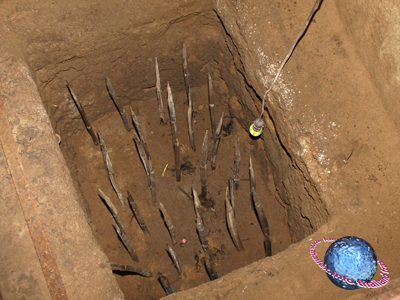|
|
 |
|
VC punji stick traps |
|
|
 |
|
The
war museum at the
Cu Chi tunnels near Saigon has
a variety of
replicas of
punji stick traps,
as were used by the
Viet Cong during the
Vietnam War. |
|
In these kinds of traps,
one or usually more spikes made out of wood or bamboo
or from metal, were placed in a pit in
the ground, which was then concealed by camouflaging it
with natural objects, such as dead leaves. |
|
 |
|
VC punji stick traps |
|
 |
|
VC punji stick traps |
|
|
Also more
sophisticated traps were sometimes made, consisting of a
wooden framework covered with metal pins, nails or
spikes, and a folding, swaying or rolling mechanism. |
|
In addition,
metal spikes were attached to heavy blocks of wood, nick-named
durians (fig.),
and were
hung from a cord
that would swing towards the direction of whoever activated
the trap by stepping on its release mechanism.




 |
|
 |
|
VC punji stick traps |
|





|
|